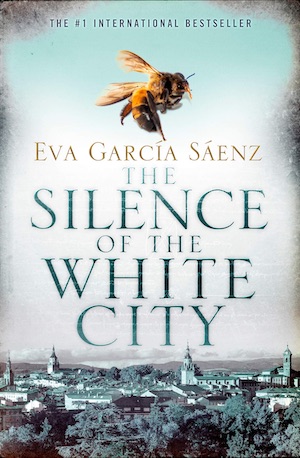
Translated by Nick Caistor — In 1996 the Basque city of Vitoria was terrorised by a serial killer, according to The Silence of the White City by Eva Garcia Saenz. Eight people were killed, including two babies. The killer placed his victims in pairs in historical buildings. With successive pair of victims were five years older than the previous ones, and the buildings they were placed in progressed through various eras up to the current period.
There were other ritualistic features, too. The children were posed embracing one another, a rare poison was used to kill them and all had distinctive surnames which marked them as having come from a privileged lineage. Eventually the killer, Tasio Ortiz de Zarate, a local celebrity, was charged and convicted of the murders. The arresting officer was his twin brother, Ignacia, who left the force shortly afterwards and, following in his twin’s footsteps, became himself a TV celebrity.
The murders caused a scandal and the whole of Spain talked of nothing else that summer. They made such an impression on the young Unai Lopez de Ayala that he decided to join the police. Now, 20 years later in 2016, Unai is a detective nicknamed The Kraken, who is a specialist in criminal profiling. Tasio is due to be released on parole shortly, and the murders have begun again. Two 20-year-olds have been found in the Old Cathedral, and Unai and his partner, Estibaliz Ruiz de Gauna, have caught the case.
The bodies have been staged in a manner identical to the previous victims, with elements of the crime matching some that were never released to the public domain. The killer must have intimate knowledge of the first murders. Does this mean Tasio was innocent? Or did he have an accomplice who has become active again? Is he directing the killings from his cell, or is he being framed to make the police think that? Could the Tasio’s brother Ignacia be the real killer?
The pair of detectives have their work cut out for them. For one they have a new boss, Deputy Superintendent Diaz de Salvaterra, who disapproves of their methods from the beginning. For another, a Twitter account purporting to belong to Tasio, is feeding the pair (and anyone else who cares to follow) advice marked with the hashtag #Kraken.
The Silence of the White City was published to great acclaim in Spain in 2016 and is the first in a trilogy. It’s an engrossing read, and full of evocative writing. The translation doesn’t feel stilted at all. Descriptions of the weather, the culture, the food and the architecture will all transport you to the region. A great deal of character work has been done too, on Unai and his family, on Estibaliz, and their boss.
The mystery works well too; a second narrative, which serves to explain why the murders occur, is interspersed with the investigation, and the reader finds out the identity of the killer the same time the detectives do. The procedural aspect of the investigation is the only (slight) weakness of the novel. Too little attention is given to the victims, especially since Estibaliz is introduced as a specialist in victimology.
But this is a minor complaint when weighed against the novel’s many virtues. I find myself hoping it has as much success as it did in its native country. Bring on book two.
For more Basque crime fiction, try The Invisible Guardian.
Vintage
Print/Kindle
£7.99
CFL Rating: 4 Stars









